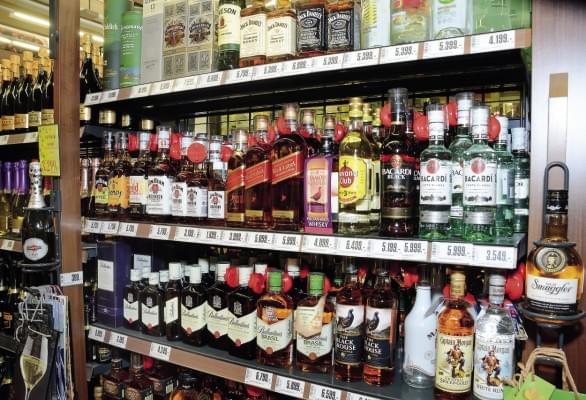Industrial alcohol production: it’s in a lot more than we think
Industrial ethyl alcohol is now not only a raw material for beverage production: it is a key product for agriculture, the chemical industry, the pharmaceutical industry and energy. Due to the diversity of production technology and raw materials, the sector is becoming increasingly important for food and agricultural enterprises, as revealed in the Agrárszektor overview.
Industrial alcohol is made from three basic groups
 The production of ethanol is based on several agricultural products, which can be classified into three categories based on their carbohydrate content:
The production of ethanol is based on several agricultural products, which can be classified into three categories based on their carbohydrate content:
-
Sugar-containing ingredients: such as molasses, sugar cane and sugar beet juice, and certain fruits. These can be fermented directly and play an important role in bioethanol production.
-
Starch-containing raw materials: corn, wheat, barley, rye, potatoes – these require enzymatic saccharification before fermentation.
-
Cellulosic raw materials: are considered the most sustainable solution, as they are made from agricultural by-products – corn stalks, wheat straw, sugar cane fiber. The processing is more complex, but does not compete with food industry raw materials.
The development of cellulosic ethanol is expected to increase in value in the coming years due to sustainability goals.
Widely used from the food industry to energy
Industrial alcohol is indispensable in many areas of the economy:
-
As a solvent for paints, adhesives, resins, perfumes and cosmetics,
-
As a disinfectant in health and household products,
-
As a pharmaceutical raw material for tinctures, ointments,
-
As a biofuel, blended with gasoline or on its own,
-
As a chemical feedstock (e.g. for the production of acetaldehyde, acetic acid, esters).
Ethanol for industrial purposes is typically denatured, thus avoiding its use for human consumption and reducing tax burdens.
Consumption trends: less alcohol, more conscious consumers
In Hungary, total alcohol consumption has been slowly decreasing in the long term, but remains high in international comparison. According to WHO data:
-
annual per capita consumption is approx. 10.4 liters of pure alcohol,
-
men’s consumption can be up to twice that,
-
consumers are increasingly looking for alcohol-free or low-alcohol alternatives,
-
the ratio of premium to domestic beers is rising.
According to industry players, the slow shift in demand is triggering new product development directions and portfolio redesign among manufacturers.
Related news
KSH: Food industry sales prices increased by 5.4 percent
🎧 Hallgasd a cikket: Lejátszás Szünet Folytatás Leállítás Nyelv: Auto…
Read more >The Hungarian food industry can take a new direction with automation and energy efficiency
🎧 Hallgasd a cikket: Lejátszás Szünet Folytatás Leállítás Nyelv: Auto…
Read more >Hungarian agriculture will be Europe’s top by 2030
🎧 Hallgasd a cikket: Lejátszás Szünet Folytatás Leállítás Nyelv: Auto…
Read more >Related news
Premium drink, premium literature
🎧 Hallgasd a cikket: Lejátszás Szünet Folytatás Leállítás Nyelv: Auto…
Read more >Responsible Gastro Hero Foundation: a sourdough and kombucha sharing campaign
🎧 Hallgasd a cikket: Lejátszás Szünet Folytatás Leállítás Nyelv: Auto…
Read more >Style, language and tools
🎧 Hallgasd a cikket: Lejátszás Szünet Folytatás Leállítás Nyelv: Auto…
Read more >







